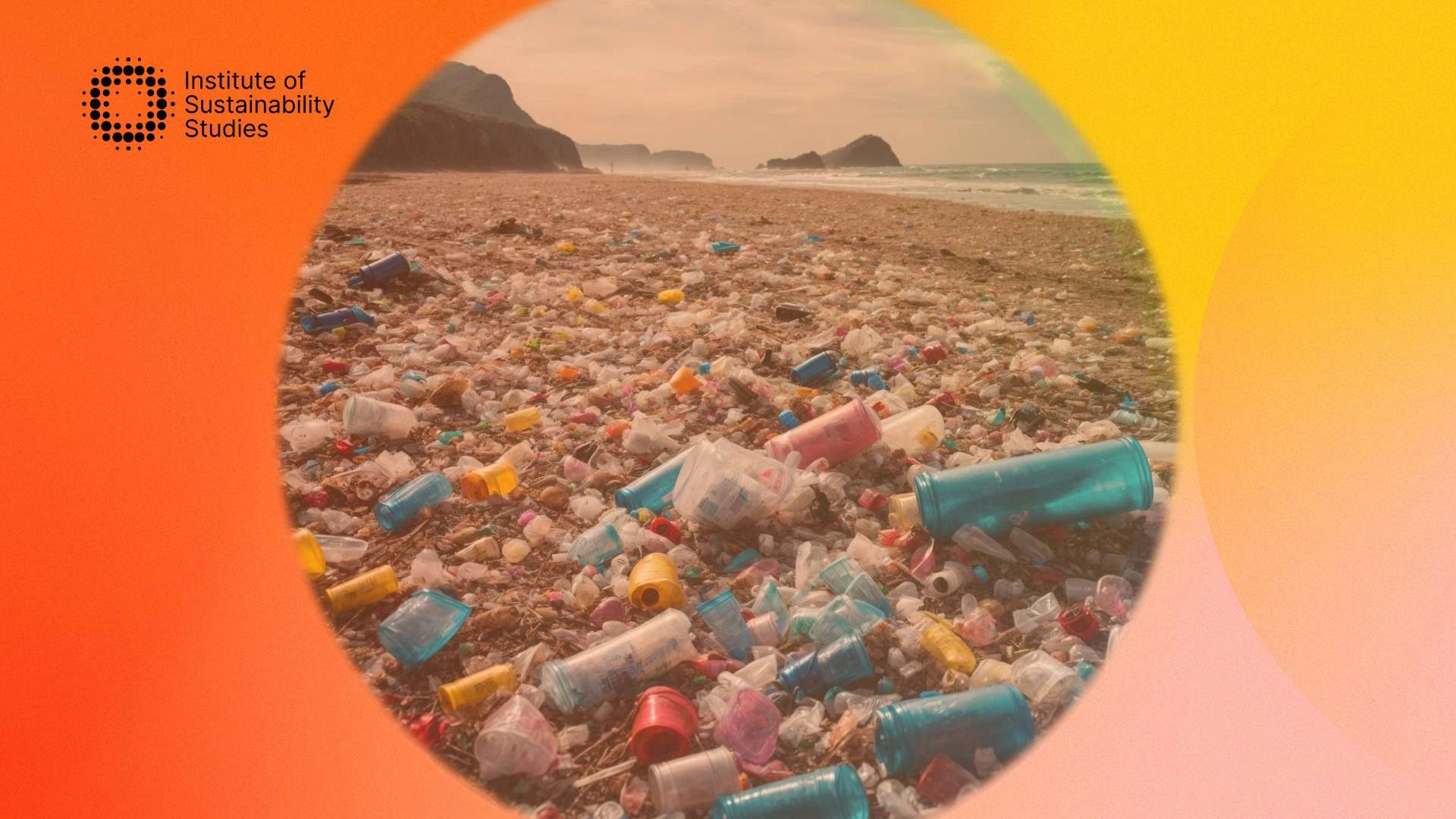The urgency to address climate change grows, and businesses are increasingly recognising the importance of carbon sequestration as part of their corporate sustainability strategies. Carbon sequestration, whether through natural ecosystems or innovative technological solutions, plays a vital role in reducing greenhouse gas emissions and creating pathways to a net-zero future. Below, we explore the various methods of carbon sequestration, highlighting both natural and technological approaches that organisations can adopt to minimise their impact and contribute to global goals.
What is carbon sequestration?
Carbon sequestration is the process of capturing and storing carbon dioxide from the atmosphere to reduce greenhouse gas levels and mitigate climate change. This process plays a critical role in managing carbon emissions by removing CO₂ and preventing it from re-entering the atmosphere. It can occur naturally or through human intervention. Carbon sequestration involves capturing CO₂ and storing it in natural sinks such as forests, soils, and oceans or engineered systems like geological formations.
Natural carbon sequestration methods
Natural methods of carbon sequestration involve using ecosystems to absorb and store carbon dioxide from the atmosphere. These processes are cost-effective, sustainable, and essential for combating climate change. Below are some of the most significant natural methods:
Forests and afforestation
Forests act as powerful carbon sinks by absorbing CO₂ through photosynthesis and storing it in biomass (trunks, branches, roots) and soil.
- Afforestation: Planting trees in areas that previously lacked forest cover.
- Reforestation: Restoring forests on degraded or deforested land to enhance carbon storage.
- Agroforestry: Integrating trees into agricultural systems to sequester carbon while improving land productivity.
Soil carbon sequestration
Healthy soils can store vast amounts of carbon, primarily in the form of organic matter. Agricultural practices can enhance soil carbon storage:
- Regenerative agriculture: Practices like reduced tillage, cover cropping, and crop rotation help soils absorb and retain carbon.
- Composting: Adding organic matter like compost to soils increases their carbon content.
- Biochar: Incorporating biochar (charcoal made from organic material) into soils locks carbon in the ground for centuries.
Wetlands, peatlands, and mangroves
Wetlands, including peatlands, marshes, and mangroves, are highly effective carbon sinks.
- Peatlands: These waterlogged ecosystems store carbon in the form of partially decayed plant material. Peatlands hold up to 30 percent of the world’s soil carbon.
- Mangroves: Mangrove forests absorb large amounts of CO₂ and trap carbon in their roots and sediments.
- Coastal Wetlands: Salt marshes and seagrasses also sequester carbon in their dense root systems and sediments.
Grasslands and prairies
Grasslands sequester carbon in their extensive root systems and soil. Unlike forests, grasslands store carbon underground, making them less vulnerable to disturbances like wildfires.
- Rotational grazing: Moving livestock strategically to prevent overgrazing and promote healthy grass growth.
- Restoration of degraded grasslands: Planting native grasses and minimising soil disturbance to enhance carbon absorption.
Oceans and marine ecosystems
Oceans play a crucial role in the carbon cycle, absorbing nearly a quarter of global CO₂ emissions. Marine ecosystems enhance this process naturally:
- Phytoplankton: Microscopic plants in the ocean absorb CO₂ during photosynthesis, contributing to carbon storage in marine food chains.
- Seagrass carbon sequestration: Seagrasses have stored carbon in underwater sediments for thousands of years.
- Kelp forests: Fast-growing kelp absorbs significant amounts of CO₂ and can be harvested for bio-based products.
Technological types of carbon sequestration
Technological carbon sequestration involves innovative approaches to actively capture and store CO₂ from industrial processes or directly from the atmosphere. These solutions are essential for addressing residual emissions and complementing natural carbon sinks in mitigating climate change. Below are the key technological methods of carbon sequestration.
Direct Air Capture (DAC)
Direct Air Capture involves using large-scale machines to remove CO₂ directly from the atmosphere. The CO₂ is then either stored underground or repurposed for industrial applications. The process works by passing ambient air through chemical sorbents that absorb CO₂, which is later released under high heat and pressure for permanent storage or reuse. Companies like Climeworks and Carbon Engineering have developed pioneering DAC systems. While DAC has the advantage of being deployable anywhere, its energy-intensive processes and high operational costs remain significant barriers to scalability.
Carbon Capture and Storage (CCS)
CCS focuses on capturing CO₂ emissions at their source, such as power plants and industrial facilities, preventing them from entering the atmosphere. The captured carbon is either stored underground in geological formations or repurposed in applications like synthetic fuels and enhanced oil recovery.
This technology is particularly vital for hard-to-abate sectors such as steel, cement, and chemical production. However, implementing CCS requires substantial infrastructure investment, and concerns around carbon storage security and leakage must be carefully managed.
Bioenergy with Carbon Capture and Storage (BECCS)
BECCS combines bioenergy production with carbon capture technology to achieve net-negative emissions. Biomass, such as crops and wood, absorbs CO₂ during growth. When burned for energy, the resulting emissions are captured and stored underground.
BECCS effectively creates a closed carbon loop, as the carbon released is offset by what the plants absorb during growth. Despite its promise, BECCS requires significant land and water resources for biomass cultivation, which can compete with food production and natural ecosystems.
Mineralisation and enhanced weathering
Mineralisation accelerates the natural process by which CO₂ reacts with minerals like calcium and magnesium to form stable carbonates. Enhanced weathering takes this concept further by spreading finely ground minerals, such as basalt, across large land areas to capture and store CO₂.
This approach not only locks carbon away permanently but also improves soil quality and agricultural productivity. While promising, large-scale deployment of mineralisation requires vast amounts of minerals and energy, raising questions about its overall sustainability and feasibility.
Biochar carbon sequestration
Biochar is produced by heating organic biomass, such as crop residues and wood waste, in low-oxygen conditions through a process called pyrolysis. This stable form of carbon can then be added to soils, where it remains locked away for hundreds to thousands of years. Biochar not only sequesters carbon but also improves soil fertility, water retention, and crop productivity, offering multiple co-benefits for agriculture. The main challenge for biochar is scaling production while ensuring a sustainable and consistent biomass supply.
Carbon sequestration in building materials
Innovations in construction now allow for the integration of captured CO₂ into building materials such as concrete. During production, CO₂ is injected into concrete, where it mineralises, permanently locking the carbon away. This method reduces the carbon footprint of construction while providing long-term carbon storage solutions. Companies like CarbonCure are already leveraging this technology to produce sustainable building materials. While promising, widespread adoption of carbon-sequestering concrete depends on cost-effectiveness and industry-wide scalability.
Summary
Carbon sequestration offers a powerful opportunity to combat climate change while aligning with global sustainability objectives. By integrating both natural and technological solutions, businesses can significantly reduce their carbon footprints, foster innovation, and support the transition to a low-carbon economy.
However, achieving this requires practical knowledge, actionable strategies, and a commitment to long-term change. Our comprehensive sustainability education equips businesses and professionals with the tools and insights needed to implement effective carbon reduction initiatives.
Dedicated to harnessing the power of storytelling to raise awareness, demystify, and drive behavioural change, Bronagh works as the Communications & Content Manager at the Institute of Sustainability Studies. Alongside her work with ISS, Bronagh contributes articles to several news media publications on sustainability and mental health.
- Bronagh Loughlinhttps://instituteofsustainabilitystudies.com/insights/author/bronagh/
- Bronagh Loughlinhttps://instituteofsustainabilitystudies.com/insights/author/bronagh/
- Bronagh Loughlinhttps://instituteofsustainabilitystudies.com/insights/author/bronagh/
- Bronagh Loughlinhttps://instituteofsustainabilitystudies.com/insights/author/bronagh/









